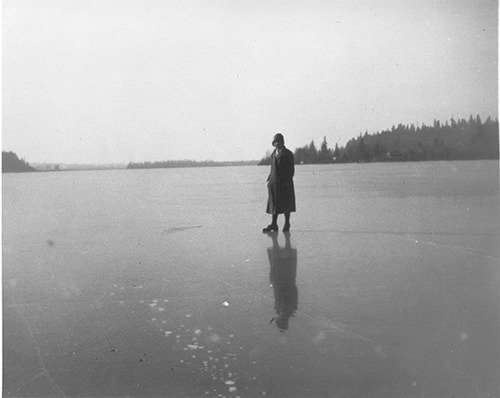We tend to watch the weather shenanigans to the east of us with a certain smug satisfaction. We may get a lot of rain, but we don’t have to shovel it or wear an entire closet’s worth of clothing to stay warm.
This was not always the case.
Maple Ridge was first settled around the end of what was called ‘The little ice age.’
Snow could be expected at any time between October and March and sometimes as late as April or May.
Another hallmark of the time was the sudden change in temperature, which could rise or plummet by tens of degrees in a few hours.
It was that sort of sudden rise in temperature that allowed for the landslide in Port Haney, when rainfall penetrated an aquifer underlying heavy frozen layers of clay.
The greatest impact was on the main transportation artery of the time – the Fraser River.
In an editorial note in the “Whoops from Whonnock,” in the Columbian newspaper of Feb. 17, 1891, the writer bemoans the lack of steamboat traffic as having no local telegraph, the community never knew when the train would be late.
The frozen Fraser was a mixed asset.
As noted, the stopping of steamboat traffic was keenly felt. However, there were advantages to the frozen surface.
As long as the river froze quickly, so that it was a smooth surface, it became a winter road, on which people hauled goods and livestock back and forth to Langley.
In 1899, in Silverdale, a drop of 40 degrees in a few hours was recorded – fast enough to defeat even a tidal river.
People seem to have been more courageous about tempting fate in those days, as evidenced by this story in “Maple Ridge Notes” in the Columbian of Dec. 2, 1896:
“The mighty Fraser also shut up shop on Thursday morning, the ice being about half an inch thick. Your correspondent made an effort to cross to the Langley side, but had to turn back. If the cold continues, we shall try to walk across on Monday.”
Another advantage to a frozen river was the collection of ice for the following year. Cut in blocks and packed in heavy layers of sawdust in a warehouse near the river’s edge, the ice could be delivered to stores and homes to keep food cold.
In March 1891, the Fraser River Freezing Company reported having put up several tons of ice in the previous few weeks.
Snow was also seen as a mixed blessing, depending on the amount.
Too little was simply annoying and had farmers complaining about the hindrance to their outdoor work, while not being sufficient for use of sleds.
Given that local roads were usually pot-holed and muddy messes, farmers looked forward to that blanket of smooth snow – regularly referred to in the Columbian as “the beautiful” if more than six inches deep – for the moving of hay, firewood, stones and other heavy items on sleighs pulled behind horses.
“The beautiful” also made visiting friends and neighbours easier and more enjoyable, and winters with insufficient snow were considered undesirable.
Of course, too much snow brought the opposite problem, leaving settlers isolated and housebound.
Fortunately, that does not appear to have happened too often.
Since those days, the freezing of the Fraser with a smooth surface has become rare.
In the picture, we see Mrs. Emma Showler of Showler’s Red and White store in Whonnock in 1922, standing on a Fraser River frozen smooth as glass.
In the 1930s, Roy Lehman of Pitt Meadows would ice skate to New Westminster while courting his soon-to-be wife.
The last time the river was frozen solid enough and smooth enough to drive across was 1950, as reported to me by Bill Harris, who, according to him, made that last trip.
– Val Patenaude is director of the Maple Ridge Museum.
